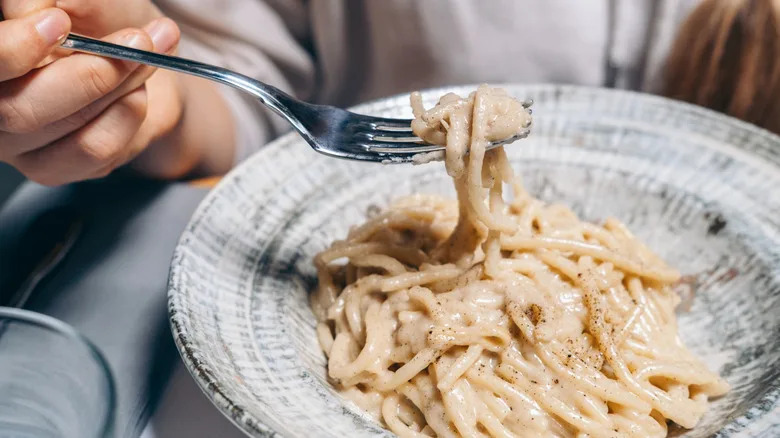That Anthony Bourdain had a soft spot for Italy and its cuisine, is no surprise, and of course, the city of Rome was no exception to his love. In one episode of “Parts Unknown,” Bourdain was seen stopping into a family-run restaurant tucked into a quiet neighborhood called Osteria dal 1931. This place has been open since 1931, and walking into it feels like stepping back in time, an unfussy menu full of Roman staples and seasonal surprises with no tourists in sight.
Bourdain started with a simple antipasto — prosciutto and artichoke hearts. To the unfamiliar, artichokes could be easily dismissed, but to Romans, artichokes are way more than just a vegetable or a side. The city has built entire seasons around celebrating them, from carciofi alla giudia (where they are fried whole until golden and crispy) to braised carciofi alla romana (cooked down with mint and garlic), so it made sense that his meal opened with this classic ingredient, prepared as simply as possible. His “primo piatto,” or first course, was what looked like spinach ravioli topped in a creamy sauce, which he described as “beautiful” and “completely awesome.” And between bites of pasta, he sipped from a bottle of Chianti, in true Roman style.
Having grown up in Rome myself, I can confirm Osteria dal 1931 has earned this reputation. While it may not pop up on lists of what to eat with just 24 hours in Rome, it has a much more understated appeal, a place where you could lose an afternoon over a plate of pasta. An osteria, after all, was historically a place where locals gathered to drink wine, play cards and spend some time together.
Read more: 8 Restaurants That Were Once Frequented By Al Capone
Why restaurants like this are worth a visit
close-up of someone eating caccio peppe – Elena Noviello/Getty Images
Roman cuisine is all about these simple dishes that lean on the freshness of flavors as opposed to complicated recipes. For example, cacio e pepe is really nothing more than pasta, Pecorino Romano, and black pepper and yet if you’ve ever tried it in Rome, you won’t ever forget it. I’d go as far as to argue it is the only Roman pasta recommendation you’ll ever need, but there are even more Roman pasta dishes with the same simple, no-nonsense appeal, like spaghetti alla carbonara and amatriciana. It all tastes so good because everything is seasonal, you’ll find fried zucchini flowers (an often overlooked part of the squash plant that is fully edible) in summer, and then chestnuts in the fall.
This is exactly why trattorias and osterias like Osteria dal 1931 are the best places to really enjoy Roman cuisine, because unlike the restaurants that are pitched at tourists, these spots are rooted in tradition — it’ll probably be a bit noisy inside, the service may be a little brisk and you’ll be given the house red in a carafe as opposed to any fancy stemware — but that’s exactly how it should be done. And Anthony Bourdain appreciated that; he wanted the kind of food you can only get at neighborhood institutions that have been doing the same thing for decades, and luckily, Rome still has plenty of them. You just have to walk past the glowing tourist menus and find the places where the locals are eating.
Want more food knowledge? Sign up to our free newsletter where we’re helping thousands of foodies, like you, become culinary masters, one email at a time.
Read the original article on Chowhound.


Dining and Cooking